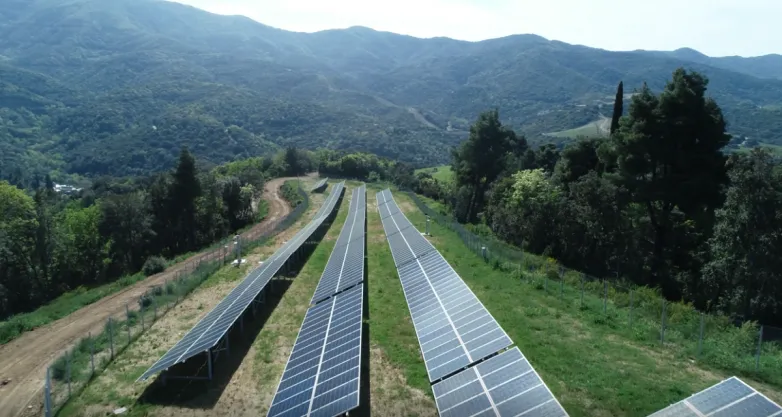Mt Athos mini-grid shows Greece the way forward
- A monastic community on the Mt Athos peninsula this year installed a solar-storage-diesel mini-grid which is set to be augmented by a biomass combined heat and power system in March.

Mt Athos, in Greece is a peninsula home to a unique center of Eastern Christian Orthodox monasticism.
The peak hosts 20 monasteries – 17 of them Greek plus one Russian, one Serbian and another Bulgarian – as well as around 2,000 monks.
The mountain is a self-governed, autonomous territory on the Greek mainland but is not connected to any grid.
Perhaps not surprisingly, the spartan existence led by the monks and their few visitors ensures electricity demand is low and has been met to date by diesel generators.
The monastery of Vatopedi mini-grid installation
The Holy Orthodox Monastery of Vatopedi, on the northeastern side of the Mt Athos peninsula, has now turned to a less polluting solution for its energy needs. The monastery has installed a hybrid mini-grid comprising 462 kW of solar generation capacity, six racks of lithium-ion batteries with a cumulative 553.8 kWh of DC storage capacity and four new diesel generators rated at 250 kVA and 487 kVA.
The mini-grid also includes seven 66 kW string inverters, an 800 kVA storage converter, step up and down transformers, remote measuring and control points and a 2 km, 20 kV cable transmission line.
Dimitrios Triantafyllopoulos is project director for off-grid and hybrid solutions at the Metka subsidiary of Athenian engineering, procurement and construction services company Mytilineos. He told pv magazine the goal was to replace most of the 450,000 liters of diesel oil consumed annually by the monastery.
That has been achieved with the mini-grid reducing daily diesel consumption 55%, from 1,300 liters to 550. The result is a power supply free of fossil fuel for 12 hours each day and free of the voltage dips and fluctuations experienced in the past.
“The curtailed energy is around 25% of the total solar PV production and future planning is under way in order to reclaim the excess energy,” Triantafyllopoulos said.
Future plans
Metka told pv magazine the monastery wants to expand the mini-grid with a biomass combined heat and power engine and more solar panels and li-ion battery racks. Two biomass generators have already been delivered and they are due to be hooked up to the mini grid in March.
The woods on the peninsula will offer biomass feed, according to Triantafyllopoulos and it is anticipated the electricity demand of 1.45 GWh recorded last year could be met entirely from renewables in future.
Could the monastery of Vatopedi provide a template for Mt Athos, or perhaps even Greece? The recently published, ten-year national energy and climate policy pathway envisages Greece’s many islands replacing diesel generators with hybrid mini-grids such as the one at Vatopedi.
The network established at the monastery, though, is one of only two in Greece at present, with the other a mini-grid established on the Aegean island of Tilos.
Also read
- Altus Power Buys 234 MW U.S. Solar-Storage Portfolio
- Soltage raises $80m debt to expand U.S. solar and storage pipeline
- Voltalia prepares site for 43-MW solar-storage hybrid in French Guiana
- Poland funds eight energy clusters, thousands of rooftop solar installs
- RWE Energizes Motorway Solar on Reclaimed German Mine

